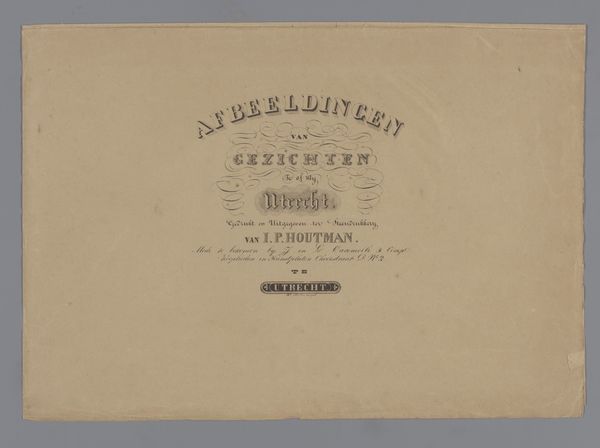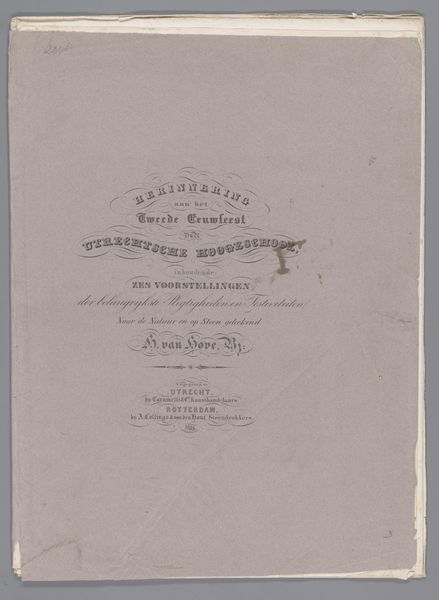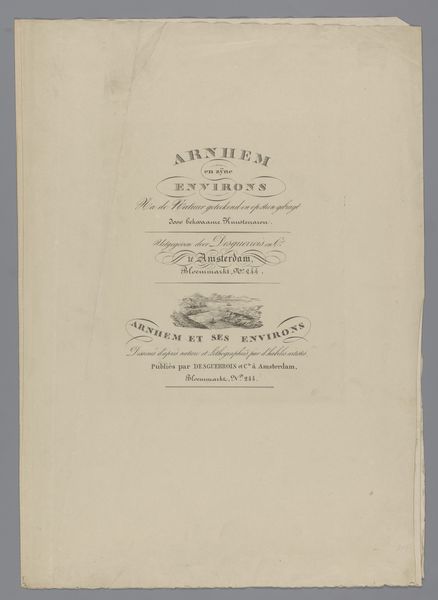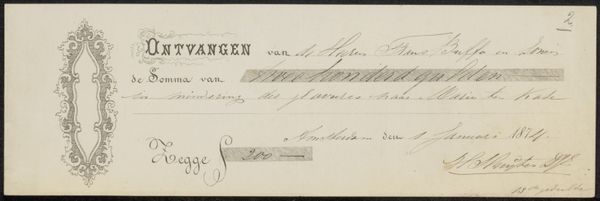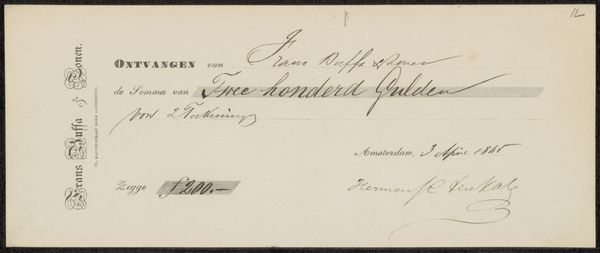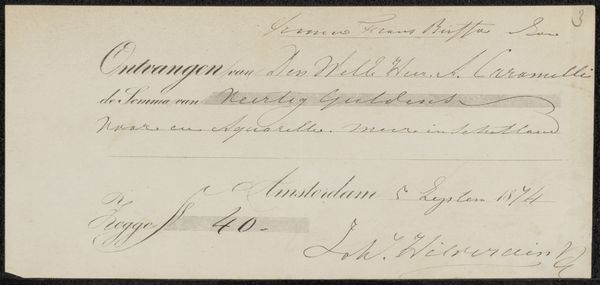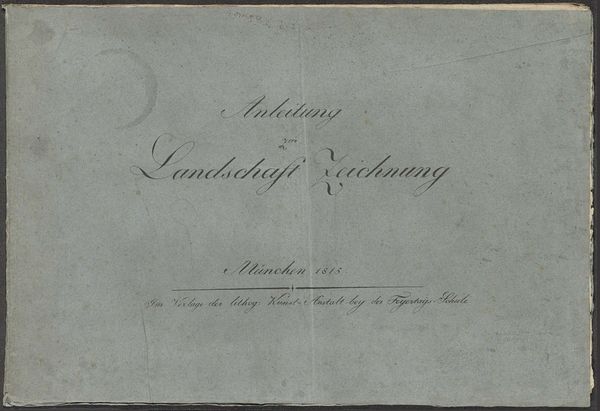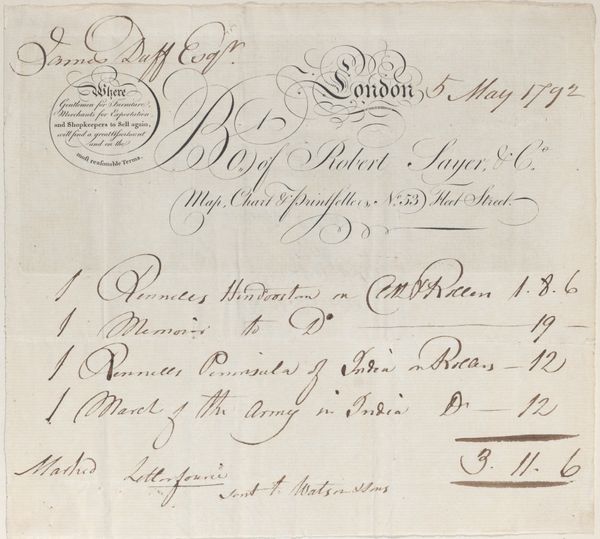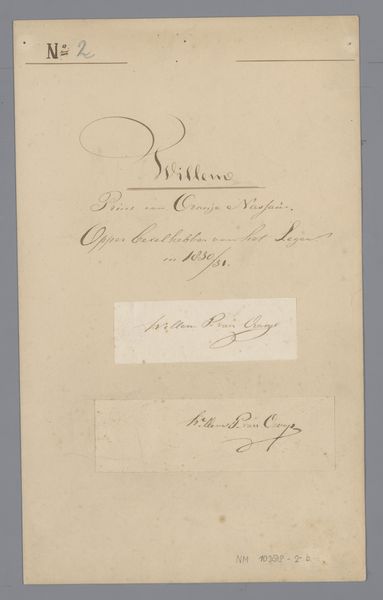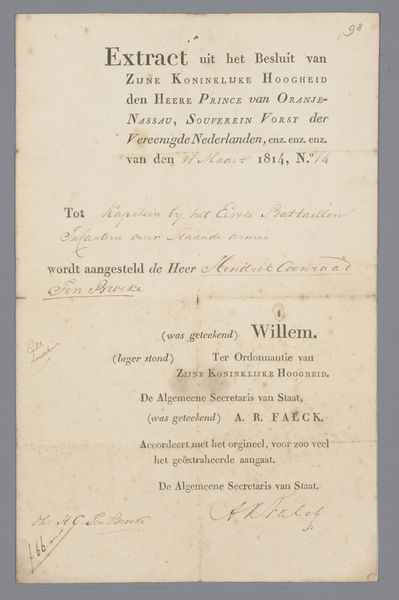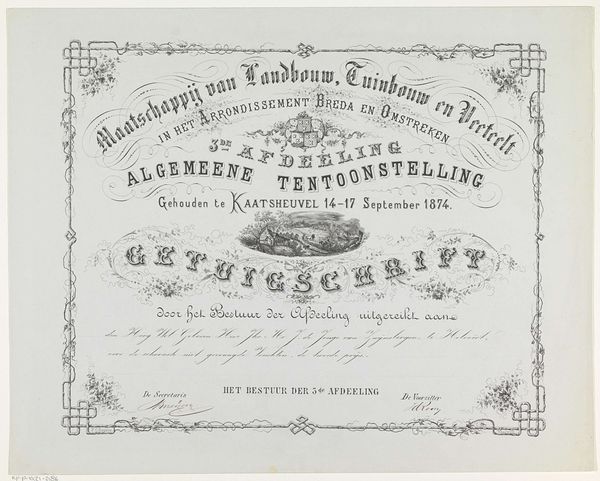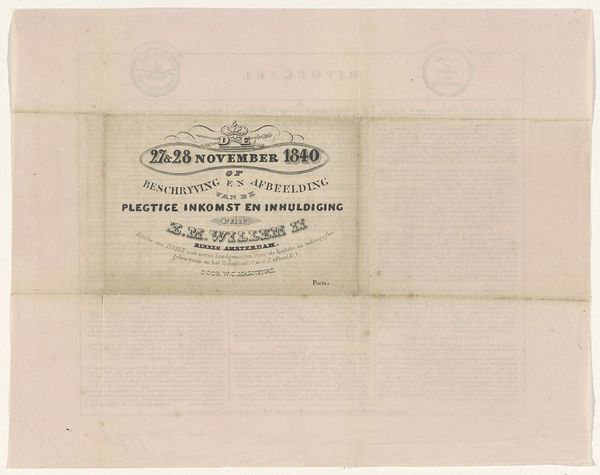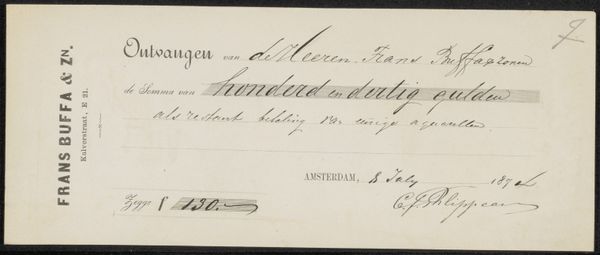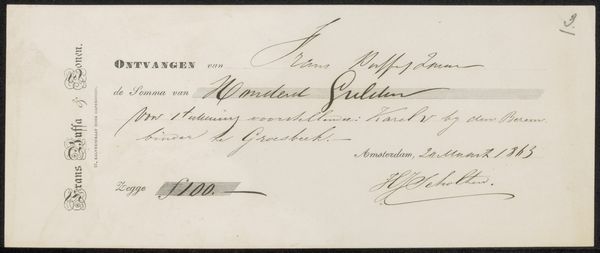
graphic-art, lithograph, print, typography
#
graphic-art
#
aged paper
#
script typography
#
hand-lettering
#
lithograph
# print
#
hand drawn type
#
landscape
#
hand lettering
#
personal sketchbook
#
typography
#
hand-drawn typeface
#
fading type
#
romanticism
#
thick font
#
calligraphy
#
small lettering
Dimensions: height 365 mm, width 510 mm, height 730 mm, width 510 mm
Copyright: Rijks Museum: Open Domain
Curator: This is the cover for "Landschap Studiën eerste levering," a lithograph created by Barend Cornelis Koekkoek around 1829-1830. The piece, showcasing an impressive level of typographic artistry, is currently held in the Rijksmuseum collection. Editor: It has an antiquated charm to it. The careful, flourished script gives the page a distinctly formal yet aged presence, like a historical document that you might find tucked inside an old book. It gives a peek into the romantic landscapes it heralds, doesn't it? Curator: Precisely. Koekkoek was a prominent figure in the Dutch Romantic movement, and this lithograph speaks volumes about the period's aesthetic sensibilities. The romanticists saw nature as divine. There was also increasing accessibility to art education, and we see artists experiment with various media, in this instance lithography allowed the mass production and distribution of artworks. Editor: Mass production makes one question who had access, though, doesn’t it? Even so, such design choices like those florid flourishes seem inherently intertwined with notions of luxury and high art. Did this make nature only consumable through an elite lens? I suppose the formal, hand-lettered title and his bolded name asserts artistic authority but simultaneously limits access based on literacy and cultural capital. Curator: It’s a valid point to consider how presentation mediated accessibility. Yet, these “Landscape Studies” allowed Koekkoek to engage with a rising middle class interested in art and travel, cultivating a taste for idealized views of their native land, through easily distributed prints. Editor: But this aesthetic idealization surely came with a cost. What were these images selling? Nostalgia for simpler times perhaps or was it something more? Koekkoek wasn't just depicting landscapes; he was curating a particular version of Dutch identity linked with an untouched, arguably imagined, pastoral history, perhaps inadvertently influencing how future generations would view and interact with those landscapes. Curator: I agree it highlights the constructed nature of landscape appreciation. Ultimately, studying it reveals not only artistic techniques but how representations of the natural world are inextricably linked with socio-political narratives of that time. Editor: This is a delicate, insightful way to engage in art. It urges us to consider the implications such artworks had beyond pure aesthetics. Curator: It provides a reminder of how art intertwines with society in so many facets of daily living.
Comments
No comments
Be the first to comment and join the conversation on the ultimate creative platform.
